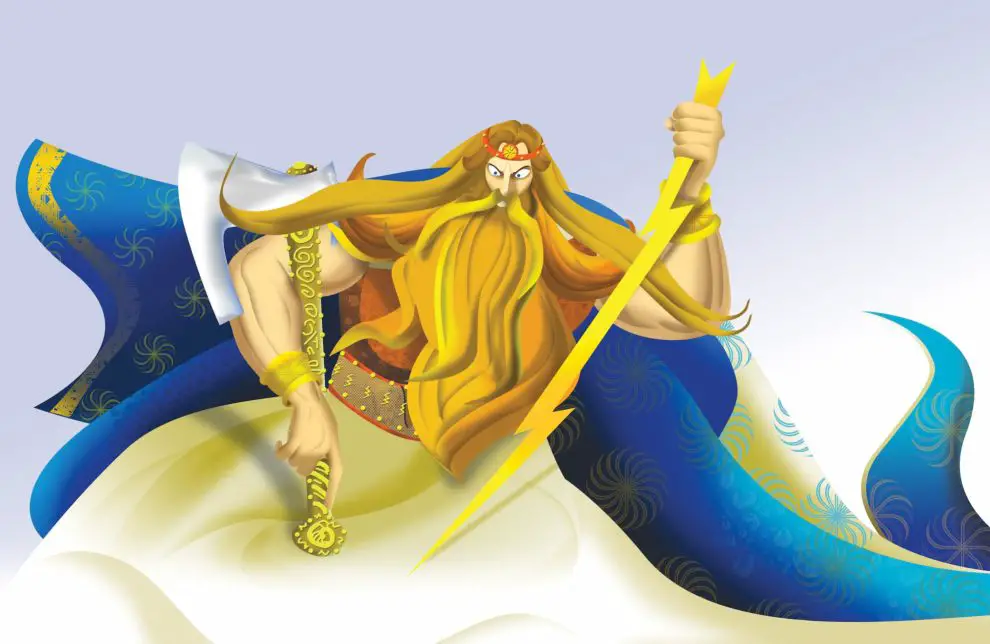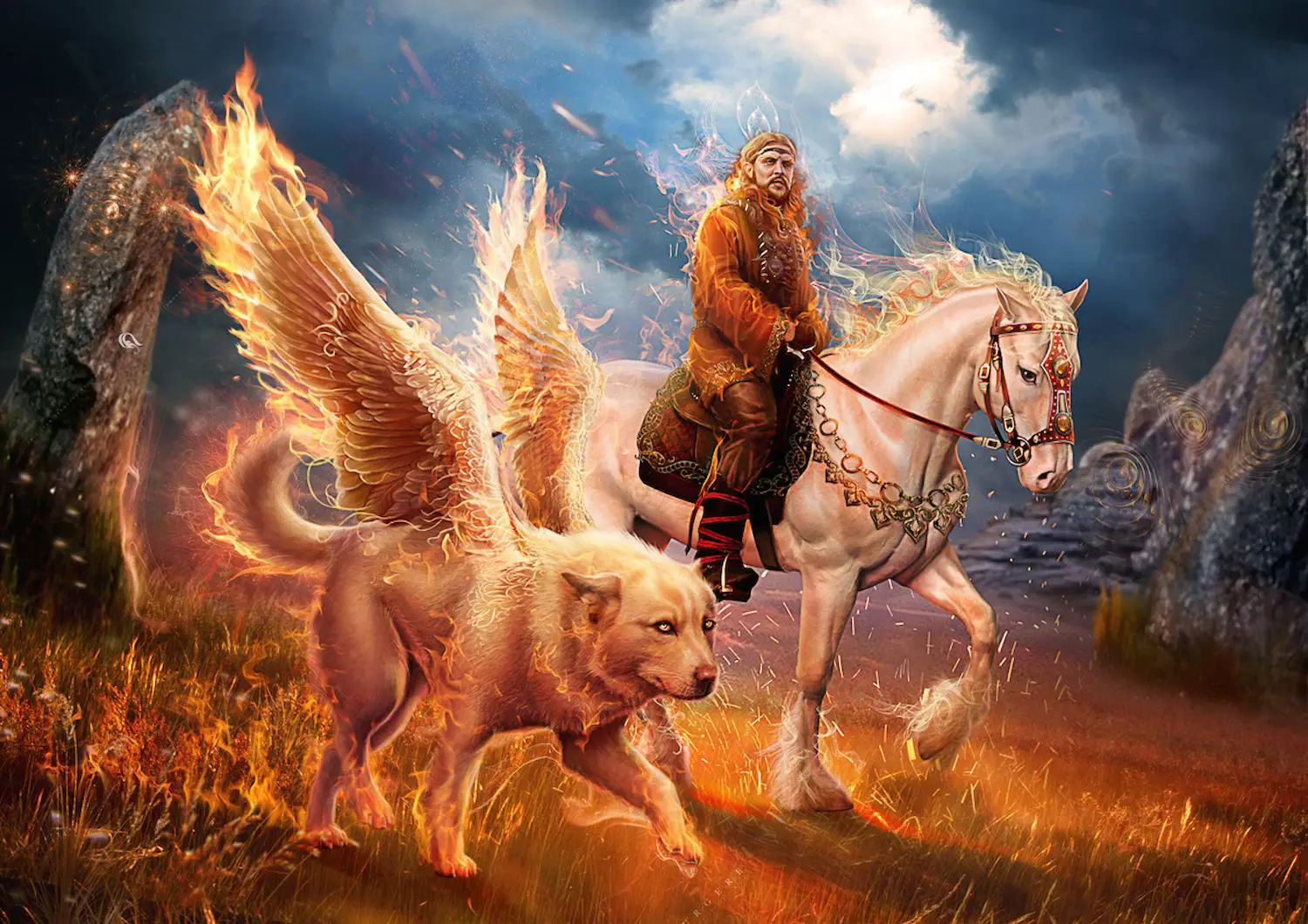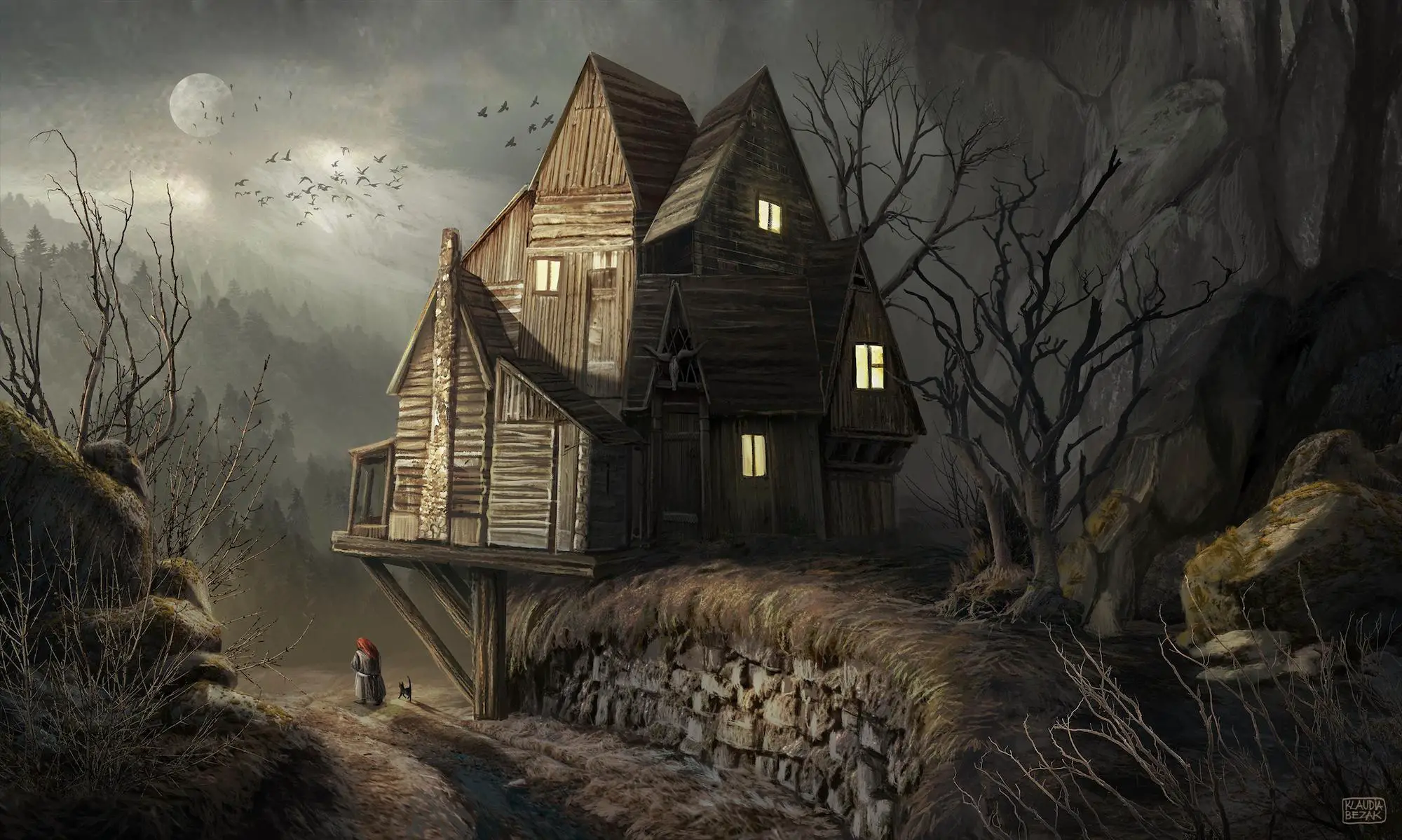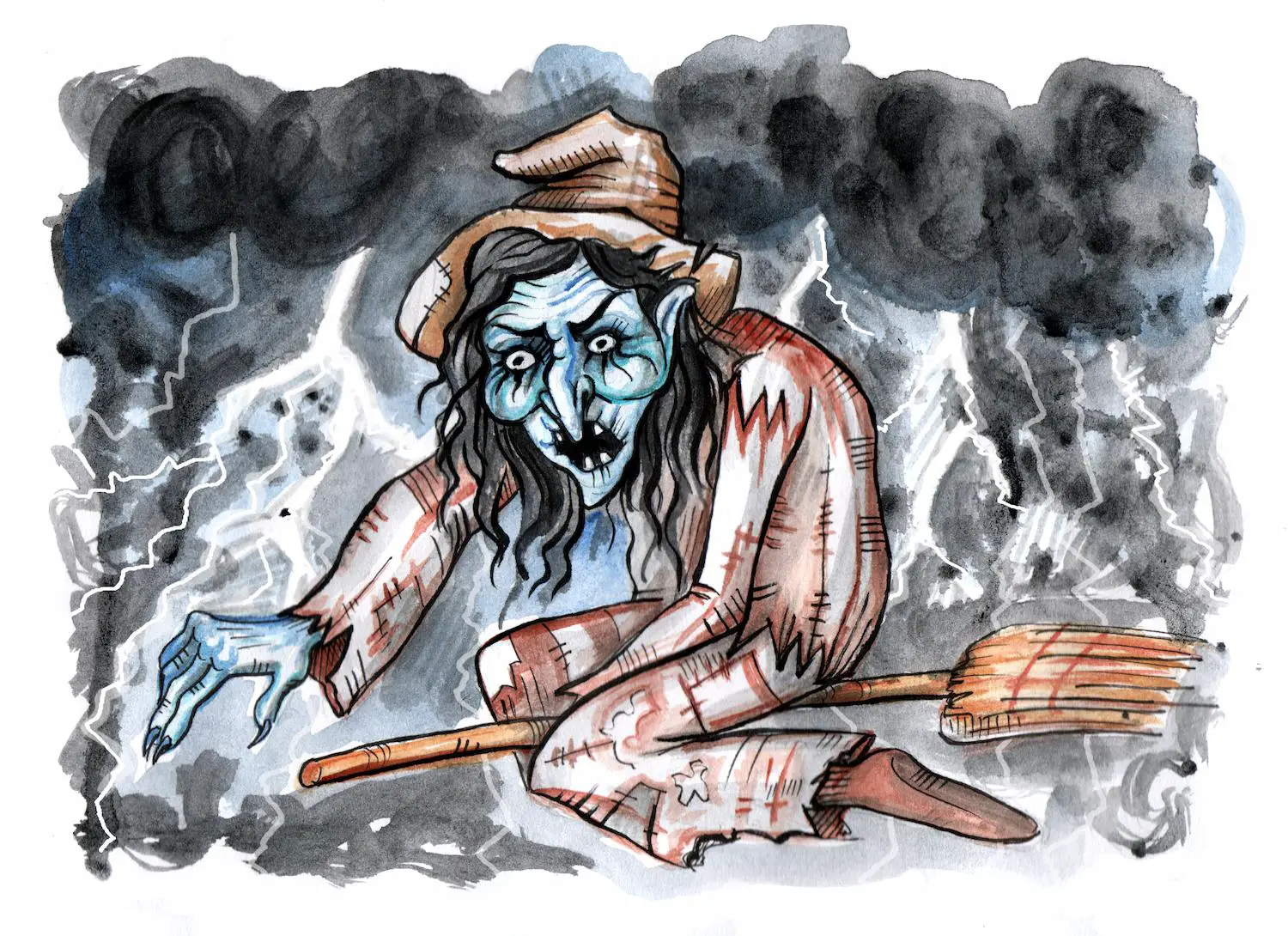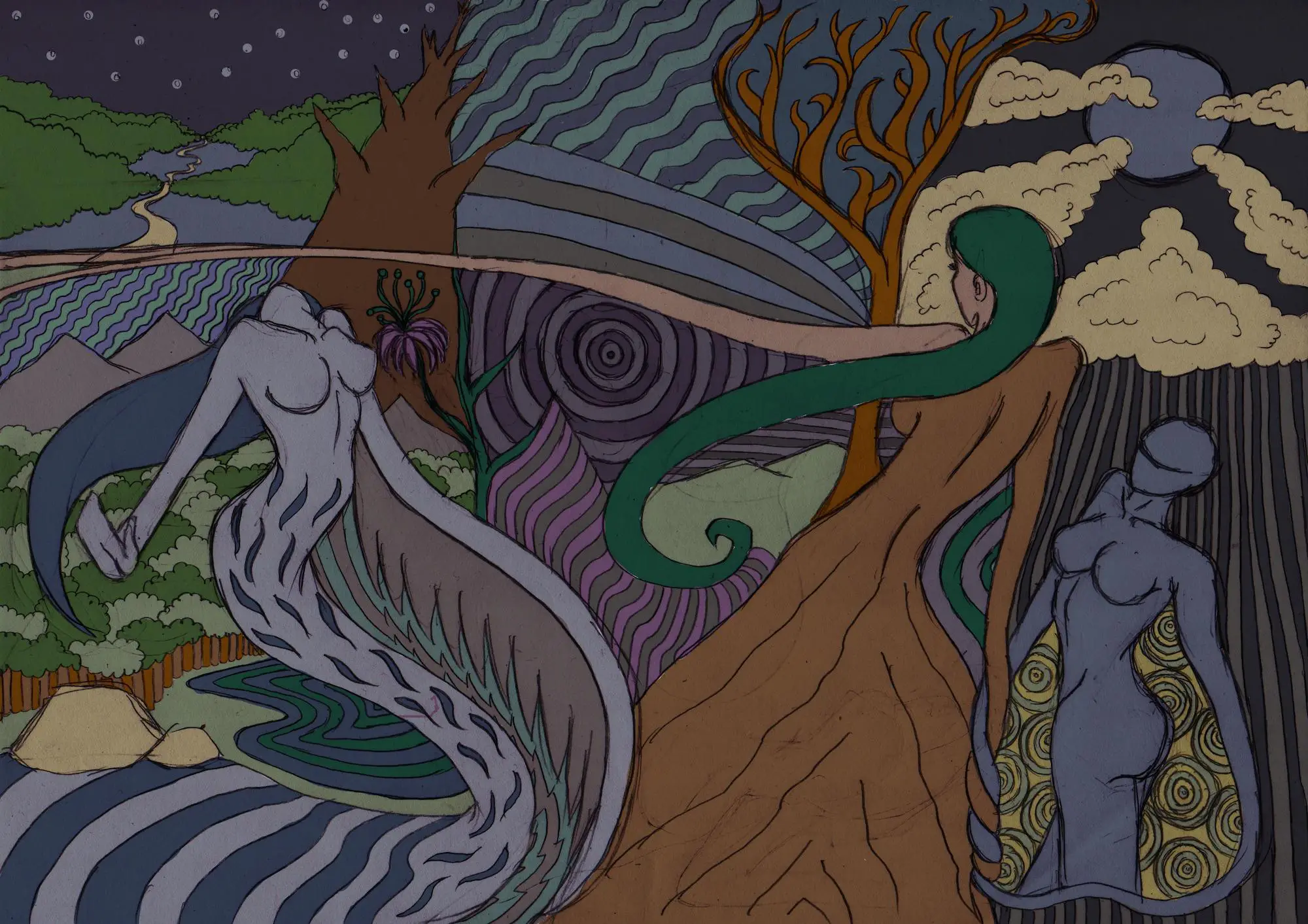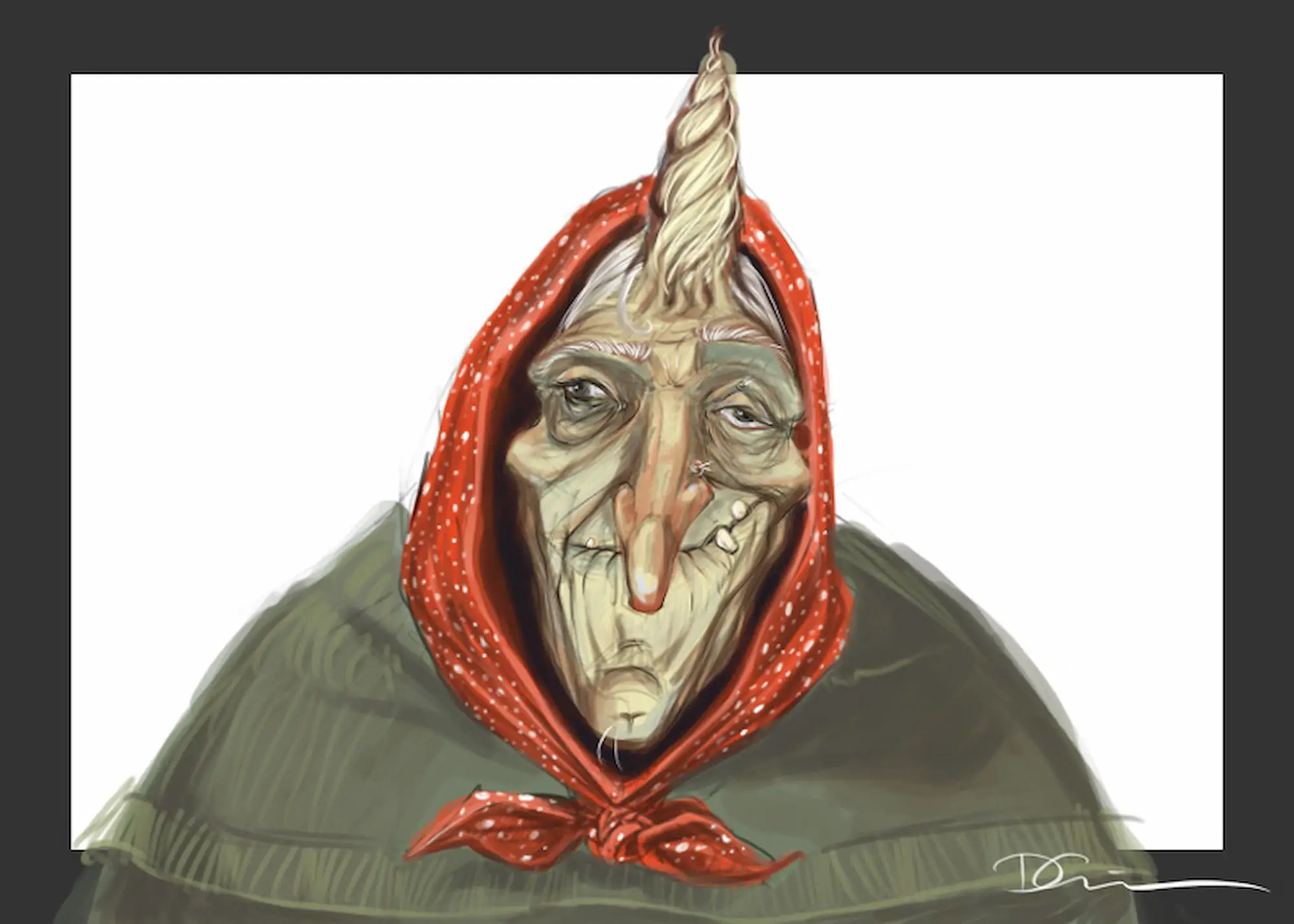The folklore expert Liliana Damaschin describes Slavic mythology as the mythological aspect of the polytheistic religion that was practiced by the Slavs prior to Christianisation.
The Slavic mythology and religion possess numerous common traits with other religions that descended from the Proto-Indo-European religion [1].
Slavic mythology does not rely on any first-hand records that would serve as background for in-depth studying, as is the case with Egyptian or Greek mythology.
Slavic paganism is quite controversial since there is a lack of proof for any kind of Slavic writing system prior to the process of the imposed Christianisation.
As a result, all the original religious beliefs and traditions were learned through the oral transmissions of tales, legends, and stories about gods, deities, fairies, and a number of supernatural, mythological creatures.
Table of Contents
Slavic Mythology in the Pre-Christian Period
Most of the records of Slavic religion were written by non-Slavic, foreign missionaries who were not interested in accurately showing the pagan beliefs.
The existing historical records confirmed the archeological remains of old Slavic Cult images and shrines, although their contexts have remained a subject of debate.
Fragments and remnants of old mythological beliefs and pagan festivals remained up to this day and can be found in folk customs, songs, and stories that are shared among all the Slavic nations.
Written Source Material
Before the Proto Slavs were fragmented into West Slavs, East Slavs and South Slavs there were no acknowledged written accounts of Slavic mythology.
The only exception is a note by Herodotus (named “Histories”) where he claimed that men from the so-called tribe of Neuri (in the far north) disguised themselves in masks made of wolf-skin for several days each year.
Some folklorists and historians interpreted this as a reference to the Slavic folk belief in werewolves while others agreed that Herodotus referred to the ancient Slavic festivals which are observed even today in some rural areas of Slavic countries.
At these carnivals, groups of young men put on animal masks and roam through the villages to banish evil spirits or proclaim the last days of winter (and the old year).
The Slavs in Bellum Gothicum by Procopius
The first reference to the Slavs and their mythology was made by the 6th century Byzantine historian Procopius in his work “Bellum Gothicum” in which he gave an account of the rituals and described the beliefs of South Slavic tribes.
According to Procopius, these Slavs were monotheistic and worshipped a single deity. The name of this deity is not specifically mentioned, but it can be deduced that it was probably the Slavic god of thunder Perun.
Reportedly, in many Slavic languages today Perun means “thunder” or “lightning bolt”. Procopius also mentions the belief in various demons and nymphs (i.e. vilas), but does not mention any other names.
The Slavic Oldest Chronicle
Another historical record that contains valuable references regarding the pagan beliefs of the Slavs (especially Eastern Slavs) is the Slavic Primary Chronicle [2].
This chronicle is focused on the history of the early Eastern Slavic states. It was completed in the early 12th century, however, it is constituted of copies of documents and notes that contain references that describe events even before the baptism of Kyiv.
The Chronicle also contains a text of the 10th-century peace treaties between the pagan rulers of the Eastern Slavs and the Byzantine Emperors.
The missionary Nestor the Chronicler describes a state pantheon introduced by Prince Vladimir I in Kyiv in 980 CE. This pantheon worshiped the gods Perun, Hors, Dažbog, Stribog, Simargl, and Mokosh.
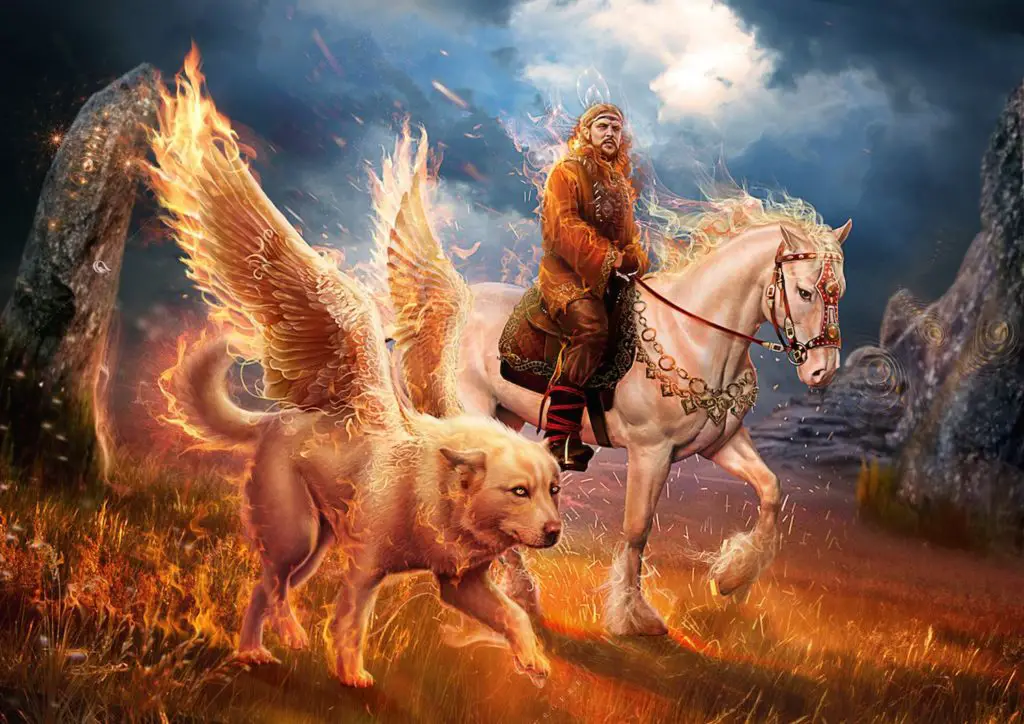
Gesta Danorum by Saxo Grammaticus
Another relevant historical record was Gesta Danorum written by the Danish chronicler Saxo Grammaticus.
This book gave a description of the war that was fought in 1168 by the Danish king Valdemar I of Denmark and the Wends of Rugen.
Grammaticus also mentioned the multi-headed deities such as Porentius, Rugievit and Porewit.
St Otto and Slavic Idols
The high priest and german bishop St Otto conducted several military-pastoral expeditions into the regions of the Slavic tribes near the Baltic Sea.
In his manuscript, St Otto has noted that the most important Slavic deity was Triglav, whose temples were in the city of Szczecin.
In the cities of Wolgast and Havelberg, the war god Gerovit was worshiped, which was probably a version of the god Jarovit, a Slavic deity possibly identical to Jarilo (from the folklore of Eastern Slavs).
Archeological Findings
In the year 1848, on the banks of the Zbruch river, several statues representing Slavic deities were discovered.
A few multi-headed statues were discovered on other locations in Slavic countries. A small four-headed statue from the 10th century was discovered under the ruins of Preslav (the medieval capital of Bulgarian tsars).
On the island in the Tollensesee lake (near Neubrandenburg) a two-headed, human-sized wooden statue was found. It is said that in the Middle Ages, this was the land of the Slavic Dolenain tribe.
In addition, a three-headed statue was discovered in Croatian Dalmatia on the hill Suvid, not far from the highest peak of Mountain Dinara called Troglav.
Slavic Gods and Slavic Folklore
A lot of the Slavic population were Christianised between the 7th and 12th centuries. Christianity was predominant amongst the noble classes.
The rural medieval Slavic population was rather fond of the old myths. Because of it, the Christian priests and monks in Slavic countries had quite a hard time when fighting against what was then known as “dvoeverie” or “double faith”.
This was particularly noticeable in Russia because Russian mythology was deeply rooted in the lives of the ordinary people who worshiped the old Slavic gods.
How Christianity Altered Slavic Myths and Folk Tales?
Christianity did not replace the old Slavic mythology, but instead, altered it and incorporated new elements and interpretations.
According to Liliana Damaschin, “Christianity may have offered a hope of salvation, and of a blissful afterlife in the next world, but for survival in this world, for yearly harvest and protection of cattle, the old religious system with its fertility rites, its protective deities, and its household spirits was taken to be necessary.”
The Christian church never really managed to solve this problem, so it started introducing Christian saints or martyrs in the place of the acclaimed pagan deities of a certain cult.
The folk beliefs and traditions of Slavic peoples are a rich source for reconstructing and understanding the ancient pagan beliefs.
Nowadays, people mostly rely on traditions that were handed down through generations (when it comes to celebrating festivals in a certain way).
The cults of old deities were intertwined with the worship of new Christian saints, and old rituals were unified with the newly introduced Christian practices and holidays.
Stories in Slavic Mythology
The mythology of the Slavs contains fairy tales with fantastic characters and creatures such as Alkonost, Baba Yaga, Koschei the Deathless, Firebird.
There are also a lot of legends about Baba Yaga, about ancient Slavic heroes (like the Russian bogatyrs) and many tales based on superstitions about vilas, rusalki, vodyanoy, likho, domovoi and vampires.
Many of the stories and tales are ancient and are based on an old mythical structure [3].
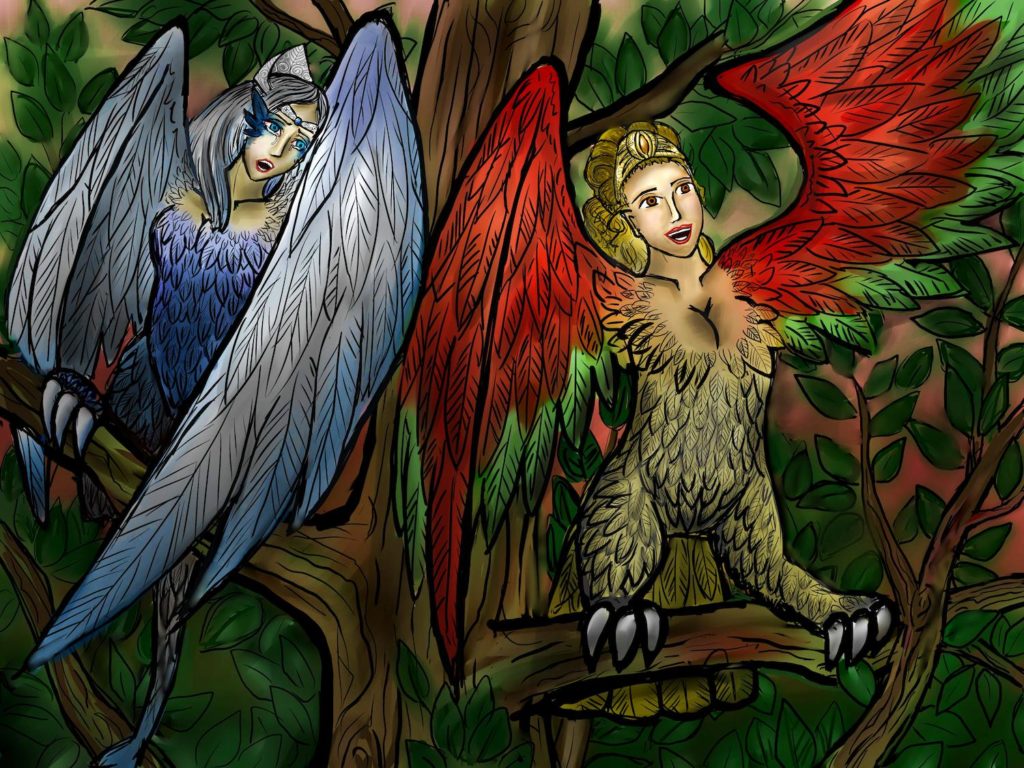
Cosmology: the Slavic Origin of the World
One of the most popular stories in Slavic mythology is one of the World Tree. This story is also present as a concept among speakers of Indo-European languages.
As a mythological symbol, the World Tree is exquisitely strong and was able to survive even after the imposed Christianization, in the form of an oak tree or a pine tree (depending on the version).
Sometimes these were combined together in opposition to the roots of the tree, which represented the Underworld, the realm of the dead.
The Story of the Supreme God
The Slavic mythological story of the supreme god is told through the character of the deity Rod or Svarog but some historical records reveal that certain tribes also adored Svarožič, Svantevit or Triglav as the supreme god.
Nevertheless, the god Perun holds the top position in this story as his name proves to be the most common in historical records of Slavic religion. He is the one who is first mentioned by Procopius as the “lord of all” (apart from being the god of thunder and lightning).
Myths
The Proto-Slavic pantheon contains a great number of myths and an even greater array of their interpretations that keep on intriguing and inspiring folklorists and historians in the realm of Slavic mythology.
The Myth of Perun and Veles
These two deities stand in opposition to each other (in almost every way). Perun is a heavenly god of thunder and lightning, he is fiery and dry and he rules the living world from his citadel that is placed on the top of the highest branch of the World Tree.
On the other hand, Veles is a chthonic god connected to waters. He is earthly and wet, but also the lord of the Underworld who rules the realm of the dead from the roots of the World Tree.
Perun is highly respected by the farmers because he gives rain to their crops and protects their harvest.
In addition, he is considered to be a god of war and weapons. His counterpart, god Veles is a god of cattle, patron of shepherds, and is associated with magic.
The Slavs imagined these two gods as rivals who take part in a divine battle in the sky. This battle between the “supreme” god and his arch-enemy was special and significant.
The cosmic battle is traced back as far as to an ancient Indo-European myth of a fight between a storm god and a dragon.
In this specific myth, Veles is presented as a serpentine creature chased by Perun. Veles tricks Perun and flees but along the way tries to transform into various animals and hides behind houses, people or trees.
In the end, he is killed by Perun or manages to flee and hide in the Underworld. Perun does not actually kill him but sends him to the place where he belongs – the Underworld or the world of the dead.
The Myth of Jarilo and Morana
The myth of these two deities is a myth about the fertility god, the vegetation deity Jarilo, and his sister and wife Morana (who was regarded as the goddess of nature and death).
Jarilo and Morana are children of Perun who are born on the night of the new year.
Jarilo symbolizes the Moon, while Morana is the daughter of the Sun. On the night of their birth, Jarilo is stolen from his cradle and taken to the Underworld where he is raised by Veles.
According to this myth, Jarilo returns from the world of the dead on the Spring festival of Jare/ Jurevo and brings spring from the eternally-green Underworld.
He meets Morana and seduces her. When the summer starts, people celebrate their divine union at the festival which is known as Ivanje/Ivan, Kupala. This union was not considered incestuous but sacred although it was a union between a brother and sister.
They were children of the supreme god which is why it was believed that their marriage brings fertility and abundance to the Earth. It was also believed that it ensures a bountiful harvest.
Reportedly, the story of Jarilo and Morana also shows many similarities with some myths of Baltic and Hittite mythology.

The Myth of Svarog, Svarozic and Dazbog
The earliest mentions of this myth were in the Eastern Slavic manuscripts where Svarog is equated with the Greek god Hephaestus. Nevertheless, the name Svarog is an ancient one, which proves that he was a deity of the Proto-Slavic pantheon.
The name of Svarog means “daylight sky” and there are some assumptions that he was the original sky god of the pantheon but his name may also mean “shining”, “fiery place” and “forge”. His name is also associated with blacksmithing.
According to the myth, Svarog had the son Svarozic who was the representative of fire on the Earth, and Dazbog, the representative of fire in the sky, associated with the Sun.
According to the belief, Svarog forged the Sun and then handed it over to Dazbog to carry it across the sky.
The Russian folklore regards him as the ruler of the Sun and a deity of light and sky.
As a contrast, the Serbian folklore manuscripts present him as a dark mythological figure named Dabog (he guards the doors of the Underworld and is therefore associated with mining and metals).
Svarozic was the fire spirit that was worshiped in the rural Russian areas, long after the Christianization. The name of Svarozic is actually a diminutive of the name of Svarog.
Because of these and other reasons, there are theories that he might be another aspect of Dazbog.
Another theory is that Svarog was the ancestor of all other Slavic gods. In that sense, Svarozic is maybe the epithet of all the other deities, which leads us to the conclusion that Dazhbog, Perun, Veles and the rest of the deities were all a form of Svarozic.
The Myth of Svantevit and Triglav
Another popular Slavic myth is the one of Triglav and Svantevit. Both of them were considered as supreme gods in different locations. Their main symbol was the horse and they were considered to have divine powers that can rule over the forces of nature.
They were presented as multi-headed gods (Svantevit with four heads, whilst Triglav had three). The main difference between them is that Svantevit rode a white horse whilst Triglav had a black one.
The main associations and symbols of these gods were war, trade, and harvest.
Creatures in Slavic Mythology
The mythologization of historical traditions has resulted in tales and songs of legendary heroes, such as the stories of Lech, Czech, and Rus, however, certain mythological elements and archetypes turned into fairy-tale characters that are popular even today.
These characters are present in stories and legends that are based on old myths. However, their historical/ folklore background, structure, and meaning are not specifically clear.
Such characters are Koschei the Immortal, Vasilisa the Beautiful, Vodanoy, Baba Yaga, Zmey Gorynych, Nightingale the Robber and others.
Sources
- https://www.academia.edu/10255821/Slavic_mythology
- http://www.encyclopediaofukraine.com/display.asp
- https://www.slaphappylarry.com/mythic-structure-definition/







